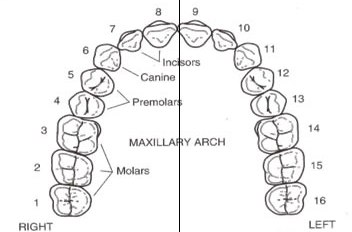Hello Dr. Hall,
I moved, & went to a new dentist for a recommended crown. The dentist allowed the hygienist to attach the permanent crown, & did not check it, much to my surprise. It feels like there is “play” in it, & it is not fitted properly. Can this be corrected, & what should I do?
Kathy from Missouri
We thank our advertisers who help fund this site.
Kathy,
I checked the dental regulations for Missouri and was able to verify that this is legal for a dentist to allow a dental assistant to cement a crown. And I’m suspecting that this auxiliary who cemented the crown was an expanded function dental assistant and not a dental hygienist. Dental hygienists specialize in cleaning teeth and screening examinations, and usually don’t perform other functions in a dental office. In Missouri, a dental assistant who has completed education in expanded functions can be certified to be able to place fillings once the tooth has been prepared by the dentist. They can perform adjustments on permanent crowns as long as they do it outside the mouth, and they can perform the final cementation of that crown.
It would seem to me, though, that the dentist would need to check the crown to make sure it fits properly. I can’t tell, by reading the regulations if that is specifically addressed by the dental board, but I suspect that some type of direct supervision of the dental assistant is required meaning that the dentist at some point needs to check the crown and make sure it meets certain clinical standards. And even if that isn’t spelled out clearly in the regulations, in my opinion a good dentist dedicated to providing quality work would want to check the crown before it is cemented. If I were the dentist in that situation, I can’t imagine doing anything less than that.
About your feeling that there is “play” in the crown—I don’t know how to evaluate that. If the crown is loose on the tooth in any way, it will fall off, so I’m sure that isn’t the case. But a new crown should not be noticeable to you. There shouldn’t be any type of strange feeling with a crown, a feeling that it isn’t quite right. It should feel so perfectly natural that you don’t notice it.
What to do at this point? I would start by making an appointment with the dentist to check the crown. There should be no charge for that. Then, if you don’t get a satisfactory answer, I would ask for a second opinion from another dentist. If you are interested, let me know and I could find you a quality dentist for that second opinion.
– Dr. Hall
Do you have a comment or anything else to add? We’d love to hear from you. Enter your comment below.
Click here to ask Dr. Hall a question of your own.
About David A. Hall
Dr. David A. Hall was one of the first 40 accredited cosmetic dentists in the world. He practiced cosmetic dentistry in Iowa, and in 1990 earned his accreditation with the American Academy of Cosmetic Dentistry. He is now president of Infinity Dental Web, a company in Mesa, Arizona that does advanced internet marketing for dentists.

